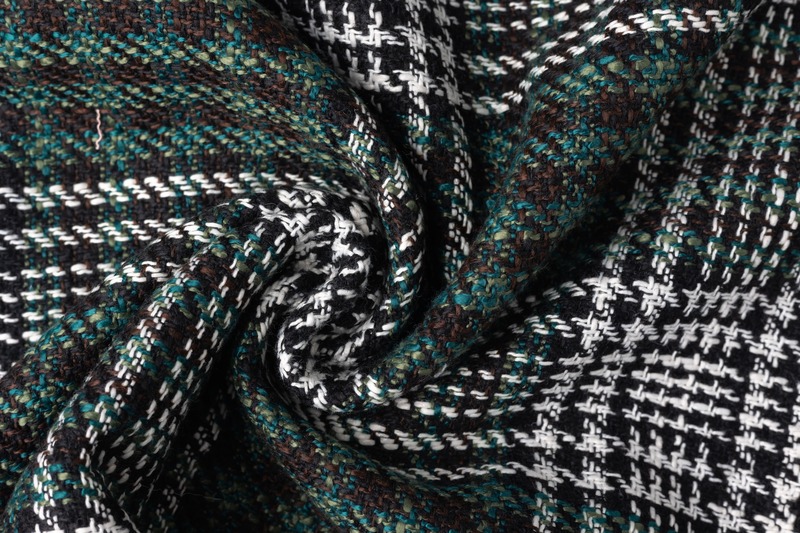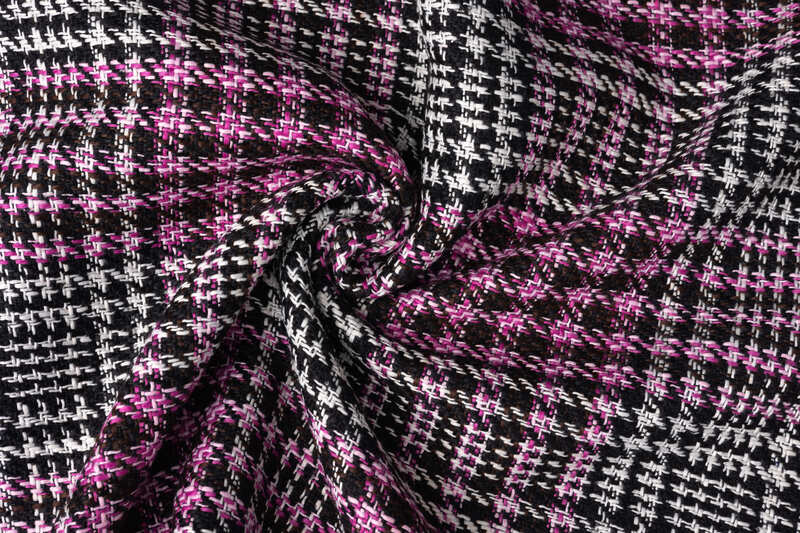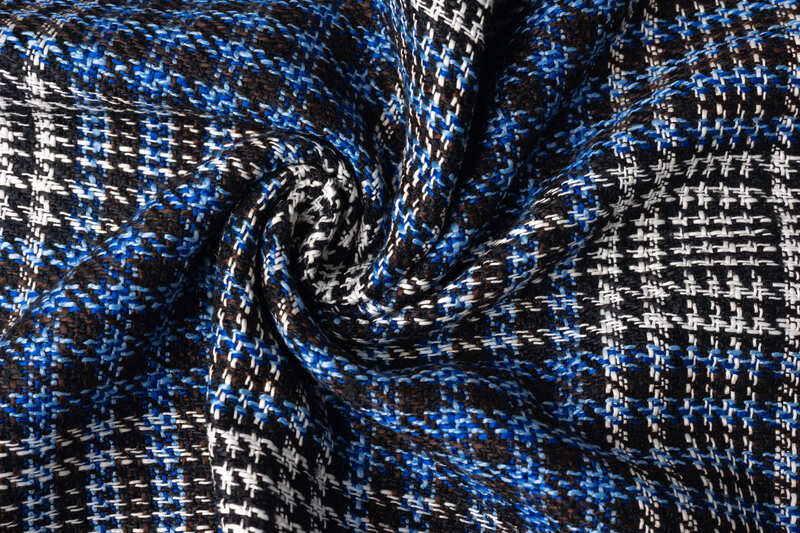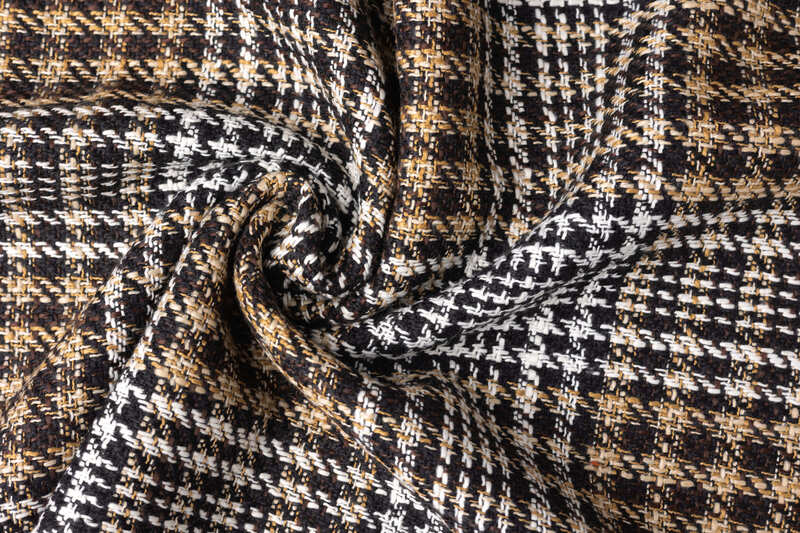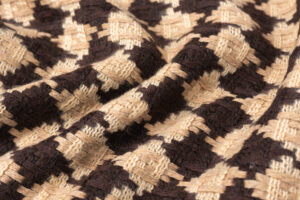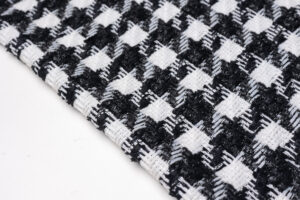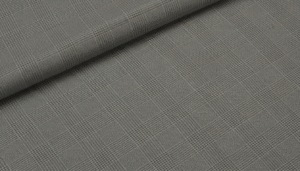Introduction
Have you ever wondered why tartan tweed remains a timeless choice in fashion? As the owner of our company, I’ve seen firsthand how this fabric blends heritage with modern flair, offering both stunning aesthetics and practical warmth—perfect for winter wear. Tartan tweed’s significance spans traditional Scottish kilts to today’s chic coats, making it essential for quality fashion. In this article, we’ll explore its rich history and versatile uses. I’ll also share insights on crafting standout products with it. Join me to discover why understanding tartan tweed elevates our winter collections.
Understanding Tartan Tweed Fabric Characteristics
What makes tartan tweed fabric a timeless choice for fashion designers and retailers? Tartan tweed stands out due to its unique blend of durability, warmth, and iconic patterned style, making it a staple in both traditional and modern wardrobes.
Quick Summary
- Tartan tweed combines wool’s natural insulation with intricate patterns.
- Its texture and weight suit it perfectly for winter wear.
- The fabric’s versatility allows it to adapt across fashion applications.
Deep Dive into Tartan Tweed Characteristics
Tartan tweed fabric owes its reputation to its wool-based composition. Wool fibers provide exceptional insulation, trapping heat while remaining breathable—a key trait for winter garments. The tweed weaving process adds a coarse, rugged texture that enhances durability.
The hallmark of tartan tweed lies in its patterns. These crisscrossing stripes, rooted in Scottish heritage, vary in color and complexity. This visual appeal sets it apart from plain fabrics, offering designers endless creative possibilities.
Weight is another defining factor. Typically heavier than standard fabrics, tartan tweed ranges from 10 to 14 ounces per yard. This heft contributes to its suitability for coats and jackets, ensuring both structure and warmth.
Expert Insight
“Tartan tweed’s enduring popularity stems from its ability to marry function with tradition. It’s a fabric that tells a story while meeting modern performance needs.” — Fiona MacLeod, Textile Historian
Actionable Takeaways
- Opt for heavier tweeds (12-14 oz) for outerwear like winter coats.
- Choose lighter variants (10-11 oz) for tailored pieces like blazers.
- Inspect the weave tightness—denser weaves signal higher quality and longevity.
- Leverage the pattern’s boldness to reduce accessory reliance in designs.
This chapter lays the foundation for appreciating tartan tweed’s unique traits. Next, we explore Quality Assessment Criteria for Tartan Tweed to ensure you select the best material for your projects.
Quality Assessment Criteria for Tartan Tweed
How can you ensure you’re selecting high-quality tartan tweed fabric? Look for tight weaves, consistent patterns, and premium wool content to guarantee durability and style.
Quick Summary
- High-quality tartan tweed features dense weaving and minimal flaws.
- Wool percentage impacts softness and warmth.
- Pattern alignment reflects craftsmanship.
Deep Dive into Quality Assessment
Start with the weave. A tight, even weave indicates high-quality tartan tweed fabric, reducing wear over time. Loose threads or gaps signal lower standards.
Next, check the material. Premium tartan tweed often contains 80-100% wool, offering superior insulation and texture. Blends with synthetic fibers may compromise comfort.
Pattern consistency matters too. Well-made tartan tweed shows symmetrical lines and vibrant colors. Misaligned stripes or faded hues suggest poor production.
Expert Insight
“The difference between average and exceptional tartan tweed lies in the details—look at the weave and wool quality first.” — Alistair Gordon, Scottish Textile Expert
Data Table: Tartan Tweed Quality Metrics
| Metric | Value | Description |
|---|---|---|
| Wool Content | 80-100% | Higher wool ensures warmth and durability |
| Weave Density | 300+ threads/inch | Tighter weaves resist fraying |
| Price Range | $30-$50/yard | Reflects premium production costs |
Actionable Takeaways
- Feel the fabric—coarser textures often mean better durability.
- Request wool content certification from suppliers.
- Examine patterns under light for color consistency.
- Invest in samples before bulk orders.
Building on Understanding Tartan Tweed Fabric Characteristics, this chapter equips you with practical quality checks. Next, we explore Navigating Tartan Patterns and Design Selection for your creative projects.
Navigating Tartan Patterns and Design Selection
How do you pick the perfect tartan pattern for your fashion project? Focus on color harmony, scale, and historical significance to align with your design vision.
Quick Summary
- Color combinations define tartan’s aesthetic impact.
- Pattern scale affects garment suitability.
- Traditional designs carry cultural weight.
Deep Dive into Pattern Selection
Tartan patterns hinge on color. High-quality tartan fabric blends hues like red, green, and navy for striking contrast. Consider your target audience—bold shades appeal to modern tastes, while muted tones suit classic styles.
Scale is critical too. Larger patterns dominate coats, making them ideal for winter coat tartan fabric selection. Smaller checks work better for tailored pieces like skirts or vests.
History adds depth. Patterns like Black Watch or Royal Stewart tie designs to Scottish roots, enhancing authenticity. Research their origins to match your brand’s story.
Expert Insight
“A well-chosen tartan pattern can elevate a garment from functional to iconic.” — Eilidh Sinclair, Fashion Design Consultant
Data Table: Popular Tartan Patterns
| Metric | Value | Description |
|---|---|---|
| Black Watch | Dark Green/Blue | Classic military pattern, widely recognized |
| Royal Stewart | Red/White | Royal heritage, bold and vibrant |
| Dress Gordon | Yellow/White | Softer tones, popular for formal wear |
Actionable Takeaways
- Match colors to your collection’s palette.
- Use large-scale patterns for statement outerwear.
- Opt for smaller checks for detailed tailoring.
- Reference historical tartans for authenticity.
Building on Quality Assessment Criteria for Tartan Tweed, this chapter guides your design choices. Next, we explore Application-Specific Selection for Winter Wear and Beyond to refine your approach.
Application-Specific Selection for Winter Wear and Beyond
What’s the best way to choose tartan tweed for specific fashion applications? Select high-quality tartan tweed fabric based on weight, warmth, and pattern suitability for items like winter coats or lightweight scarves.
Quick Summary
- Heavier tweeds excel in winter outerwear.
- Lighter variants suit accessories or layering.
- Pattern scale impacts visual and functional outcomes.
Deep Dive into Application-Specific Choices
For winter coats, prioritize heavier tartan tweed—12-14 ounces per yard. This weight ensures insulation and structure, critical for cold-weather protection. High-quality tartan fabric with dense weaves enhances durability against wind and wear.
Lighter tweeds, around 10-11 ounces, shine in accessories. Think scarves or vests— breathable yet stylish. These options balance warmth with flexibility for milder climates.
Pattern choice ties it together. Bold, large-scale tartans make coats stand out, while subtle checks elevate smaller pieces without overwhelming them.
Expert Insight
“Matching tweed weight to application is key—too light, and a coat loses purpose; too heavy, and a scarf becomes impractical.” — Moira Fraser, Outerwear Designer
Actionable Takeaways
- Use 12-14 oz tweed for winter coat tartan fabric selection.
- Choose 10-11 oz for scarves or blazers.
- Pair bold patterns with outerwear, subtle ones with accessories.
- Test drape and feel for intended use before cutting.
Building on Navigating Tartan Patterns and Design Selection, this chapter refines your application choices. Next, we explore Strategic Sourcing and Supply Chain Management to secure your materials.
Strategic Sourcing and Supply Chain Management
How do you source high-quality tartan tweed fabric efficiently? Partner with reputable mills, verify supply chain transparency, and prioritize sustainable practices to ensure consistent quality and availability.
Quick Summary
- Trusted suppliers guarantee fabric quality.
- Transparent supply chains reduce risks.
- Sustainability boosts brand value.
Deep Dive into Sourcing Strategies
Start with supplier selection. Mills in Scotland, like those in the Outer Hebrides, produce high-quality tartan fabric with centuries of expertise. Verify their credentials—look for certifications like the Harris Tweed Orb.
Supply chain transparency is next. Traceability from wool shearing to weaving ensures ethical production and consistent quality. This matters for winter coat tartan fabric selection, where reliability is key.
Sustainability seals the deal. Eco-friendly mills using natural dyes and local wool cut costs and appeal to conscious consumers. Demand for sustainable tweed grew 15% in 2023, per industry reports.

